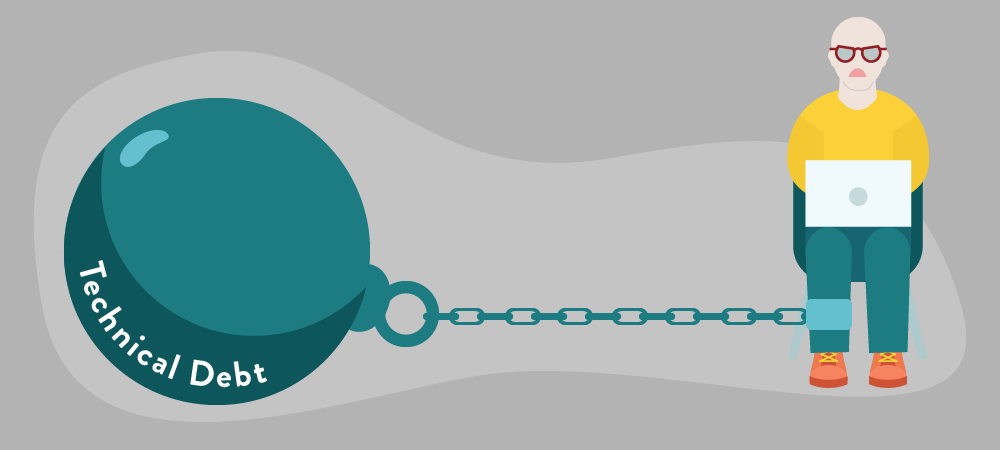Technical Debt : Pay Now OR Pay (Heavy Price) Later
 Saurabh Mahajan
Saurabh Mahajan
What is Technical Debt ?
Technical debt refers to the implied cost of additional work caused by choosing a quick, easy, or temporary solution over a better approach that may take more time or resources. Essentially, it’s a compromise in the code or system design that allows faster delivery in the short term but could lead to complications, inefficiencies, or bugs in the future if not addressed.
Causes of Technical Debt
1. Time Pressure and Deadlines
- Tight deadlines often lead to shortcuts, where teams choose quick solutions over optimal, sustainable ones to release features or products faster. This can result in temporary code that becomes difficult to maintain.
2. Changing Requirements
- New customer needs or market changes can force changes mid-development, often leading to suboptimal solutions. This can leave portions of the code outdated or patched together, accumulating debt as the code evolves without refactoring.
3. Inadequate Planning and Architecture
- Lack of upfront planning, especially for large-scale or long-term projects, can result in poor architecture that is hard to scale or adapt. When the foundation isn’t built with future growth in mind, the system quickly accumulates debt.
4. Lack of Experience or Expertise
- When developers lack experience, they may create code that works in the short term but is inefficient, hard to read, or difficult to extend. Insufficient expertise also leads to poor design choices and improper implementation of best practices.
5. Poor Code Quality and Lack of Standards
- Inconsistent coding standards, inadequate code reviews, or rushed development can produce low-quality code that is difficult to maintain or extend, creating technical debt over time.
6. Limited or Insufficient Testing
- Skipping testing or conducting only minimal testing can result in undetected bugs or system failures that are costly to fix later. Limited automated testing also increases the maintenance burden as the codebase grows.
7. Lack of Documentation
- When technical documentation is missing or outdated, it can hinder understanding and modification of the code by other developers. This often leads to duplicated efforts, increased maintenance costs, and higher risks when implementing changes.
8. Outdated Technology and Legacy Systems
- Relying on old technologies or legacy systems can make new feature development difficult, as it often requires complex workarounds. Integrating outdated systems into modern architectures can also be time-consuming and error-prone, adding to technical debt.
9. Feature Creep and Frequent Changes
- Constantly adding new features without prioritizing debt reduction or refactoring can lead to a bloated, complex codebase that is hard to maintain. This results in feature creep, where new additions make the system harder to manage.
10. Lack of Alignment and Communication
- When product management, development, and other teams aren’t aligned on priorities or goals, misunderstandings and conflicting priorities arise. Misalignment can lead to poorly thought-out compromises, causing technical debt to accumulate.
11. Poor or Inefficient Processes
- Inefficient or missing processes, such as lack of a CI/CD pipeline, insufficient code review practices, or no clear plan for debt reduction, can lead to inefficient workflows and more technical debt.
12. Compromises on Security and Compliance
- Security can sometimes be deprioritized in favor of speed, especially if there’s no immediate risk. However, this creates security debt that must be addressed to avoid vulnerabilities and maintain compliance.
How to manage Technical Debt ?
- Prioritize and Categorize Debt
What to do: Categorize technical debt by impact and urgency to prioritize the most critical issues. Use tools like JIRA or Trello to track and organize debt items as you would with regular features or bugs.
Example: Suppose you identify that some parts of the codebase have outdated libraries causing security vulnerabilities, while others need refactoring for improved readability. You’d prioritize fixing security vulnerabilities (high-impact debt) over readability improvements (low-impact debt).
2. Allocate Time for Refactoring in Each Sprint
What to do: Set aside time in every development sprint for addressing technical debt. This might be a specific percentage of time or a fixed number of tasks per sprint.
Example: A team allocates 20% of each sprint to refactor parts of a legacy system, gradually reducing debt without stalling new feature development. For instance, refactoring repetitive code sections can streamline future updates and reduce maintenance time.
3. Implement Automated Testing
What to do: Automated testing helps catch bugs early, reducing technical debt caused by untested or minimally tested code. Prioritize areas of high complexity and frequent change for automation.
Example: A team that releases regular updates without automated tests finds bugs only after deployment, leading to urgent fixes. By implementing unit and integration tests, the team catches issues before release, reducing rework and related debt.
4. Enforce Coding Standards and Code Reviews
What to do: Establish coding standards and conduct code reviews to maintain quality and prevent poor code from entering the codebase. Code reviews also help junior developers learn best practices.
Example: A team adopts a standard for variable naming and modular code design, enforced during code reviews. By consistently following these standards, the team reduces future rework needed to correct confusing or unstructured code.
5. Document Code and Architecture Decisions
What to do: Ensure all code, especially complex or critical sections, is well-documented. Document architectural decisions as well, so future developers understand the reasons behind them.
Example: When building a new feature, the team documents how and why a specific design choice was made. Later, when a new team member needs to modify the feature, they can quickly understand the context, reducing time spent deciphering the code.
6. Regularly Review and Refine the Architecture
What to do: Periodically review the system architecture to ensure it aligns with current requirements. If the architecture becomes a bottleneck, consider refactoring or rearchitecting.
Example: A team initially built a monolithic application but found scaling it difficult as user demand grew. By gradually transitioning to a microservices architecture, they reduce technical debt related to scaling limitations.
7. Use Debt Tracking Metrics
What to do: Use metrics such as code complexity, code coverage, and the number of open issues to quantify and track technical debt.
Example: A team uses SonarQube to track code quality metrics, identifying areas with high complexity. Over time, they see a decrease in code complexity as they address high-priority debt, improving maintainability.
8. Refactor When Adding New Features
What to do: When working on new features or updating old ones, refactor the surrounding code to align with current best practices.
Example: While adding a new report feature, a team refactors the reporting module to use a shared utility for data processing, reducing code duplication and simplifying future updates.
9. Communicate and Educate about Technical Debt
What to do: Make sure stakeholders understand the importance of managing technical debt and its long-term effects on productivity and quality.
Example: A team explains to product management how unaddressed technical debt in the authentication system could lead to potential security vulnerabilities. As a result, time is allocated in the roadmap for refactoring to improve security.
Subscribe to my newsletter
Read articles from Saurabh Mahajan directly inside your inbox. Subscribe to the newsletter, and don't miss out.
Written by

Saurabh Mahajan
Saurabh Mahajan
Results-oriented and PMP-PSPO certified Project Manager with a proven track record of successfully delivering complex projects on time and within the agreed scope. With over 16 years of experience in the IT industry, I have worked in operations, technical support, change management, service management, and in project management roles, contributing to the various functional aspects of B2B and B2C products. I have led cross-functional teams and managed projects of varying scopes and sizes throughout my career. I drive project success through effective communication, strategic planning, and meticulous attention to detail all this with a pinch of humor. My expertise spans the entire project lifecycle, from initial requirements gathering to final implementation and post-project evaluation. I have great interest in project & product management and digital platform strategy. and therefore, I want to continue learning the ever-changing facets of product and technology management in a product company and contribute to building great digital products and platforms for end customers.